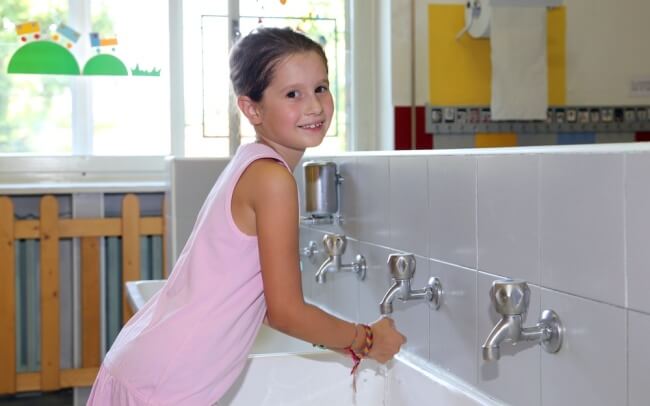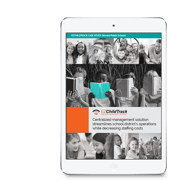
Illness, injury, or death of a child is something no parent or caregiver wants to consider, but as a childcare provider, you and your staff must be ready for any eventuality. So many things can happen with small children from minor scrapes to choking.
The CDC reports the most non-fatal injuries occur due to one of five causes - falls, being struck by or against an object, animal bites or insect stings, overexertion, and motor vehicle accidents.
More than 12,000 children aged 19 and younger die from accidental injuries annually. Over 9.2 million receive emergency treatment for non-fatal injuries. The leading causes of the death of a child in the United States are burns, drowning, falls, poisoning, and road traffic.
Although health and safety training is required by the federal government, it is more than a compliance issue.
Health and safety training teaches and reinforces important skills, keeping them fresh. In the event you must use them, you will know what to do because you have practiced. Your staff will not panic. Parents know they are leaving their precious children in good hands.
Federal requirements for training and safety for childcare providers
ChildCareAware.org put together a list of the health and safety training topics required by federal regulations. The regulations are part of the Child Care and Development Block Grant Act of 2014 (CCDBG); the final rule was approved in September 2016. The appropriate training activities are determined at the state level.
The CCDBG requires training in the following topics.
- Pediatric first aid and CPR
- Prevention and control of infectious diseases, including immunizations
- Safe sleep practices and prevention of Sudden Infant Death Syndrome (SIDS)
- Prevention of Shaken Baby Syndrome, abusive head trauma, and child maltreatment
- Recognition and prevention of child abuse and neglect
- Medication administration
- Prevention and response to emergencies due to food allergic reactions
- Emergency preparedness and response for natural disasters or man-caused events
- Handling, storage and disposal of hazardous materials
- Indoor and outdoor safety training - identifying and protecting children from hazards, bodies of water, traffic, etc.
- Safety measures in transporting children (if applicable)
Although the list seems long, childcare facilities should have policies and practices covering these topics. Most states require training for childcare providers every two years.
However, the more often you and your staff train, the better you will retain the practices and able to act immediately. Training updates old skills and reinforces skills learned previously.
Where to find training
You can find training courses through your local Child Care Resource and Referral (CCR&R) agency. Your state licensing office is an excellent resource for information and training requirements. Also, the National Center on Early Childhood Health and Wellness provides current and future childcare providers with free and low-cost training resources.
Tips for providing childcare health and safety training
Dr. Charlotte Hendricks, founder and president of ChildHealthOnline.org, put together a brochure with helpful tips for trainers and providers seeking training. She also discusses how to train effectively, so the lessons resonate with the trainees and remain with them.
- Effective training must be purposeful. The trainer must know the topic and the audience. Provide interesting activities and interactive discussion. Also, remain aware of the training setting.
- Determine the purpose of the training session. Is it required explicitly for licensing, accreditation, or contact hours? Are you training to prevent a situation or for a different reason? What skills, experience, and knowledge does your staff already have?
- Clearly state learning outcomes. Have measurable objectives for the training sessions. Adults learn best when they have a specific reason for learning new skills.
Organize the training content so it makes sense to your audience and helps them make the appropriate connections. For example, you can organize the content by facility area, type of emergency, or type of hazard. Break those down into categories of situations and responses for specific circumstances.
The most effective learning occurs when activities are hands-on. You and your staff can practice new and rarely used skills in a non-emergency setting until the movements become automatic. Real-life examples and appealing graphics help knowledge retention.
At the completion of a training session, hand out copies or the information covered. The information should be presented concisely in an easily read format - use bullets and write at a fourth-grade to sixth-grade reading level to ensure understanding for all staff members.
Color and graphics, as long as they are not overwhelming, have the same effect as the real-life examples and graphics showed during training. Keep the formatting clean and full of white space. Everything should still make sense if a staff member picks it up six months after training.
Evaluate the training to determine if there is anything you need to change.
- Were the training objectives met?
- Did the training meet grant and funding requirements?
- What did participants like? What didn’t they like?
Use the evaluations to improve training programs for future presentation.
How childcare management software can help
Staff training records are an essential element in maintaining compliance with federal and state law. Childcare management software can store these records safely and provide notification when a new training session is required.
The information is available in a report that is easily retrieved for audit and licensure purposes. Also, all safety and health policies and procedures can be placed in the system and made available for parents and prospective clients.
Summary
Childcare providers are required by law to receive health and safety training. Childcare facilities must have up-to-date policies and written procedures outlining the safety training requirements and the methods used to ensure a healthy environment for children.
However, beyond the need for compliance with regulations is the commitment every provider makes to parents when their children are dropped off in the morning, and that is that the children will still be safe and whole when they are picked up.
If the worst happens, parents and caregivers need to know that the appropriate responses will be made in the event of an emergency. The safety and health of the children are paramount, and everyone involved in their care will perform at their utmost to ensure the proper steps are taken to minimize injury and prevent death.
Find effective training programs through your local Child Care Resource and Referral agency. Verify the child training requirements with your state licensing office. Obtain training assistance and resources from the National Center on Early Childhood Health and Wellness, and ChildCareAware.org.




